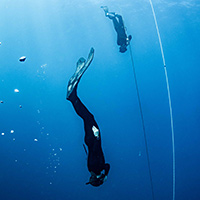Nearly two years ago, I swam with whale sharks off Nosy Be, the north western coast of Madagascar, for the first time. As a conservation biologist in between two jobs with a passion for marine megafauna – I organised a last minute trip to this well-known tourist destination the following year.

I remember asking Tony, our boat driver, after my first encounter with a whale shark (best day of my life?), about the population’s size and structure, assuming this beautiful site abounding with sharks, whales and turtles was already heavily monitored.
To my surprise, Tony told me that no one knew anything about the population, yet he said their presence was increasing each year from October to December. Jokingly, he suggested I set up a monitoring project as I loved Madagascar and the sharks so much. Little did I know that I would be back in Nosy Be swimming with whale sharks not much later.

Once back from my trip, I used my spare time to email whale shark scientists across the world. I saw a unique opportunity for research as whale shark sightings in Tofo, Mozambique have dropped by 79% in recent years while local operators in Nosy Be have reported an increase. Maybe these whale sharks move between Mozambique and Madagascar?
Furthermore, aside from one publication (Harding, 2007) and a short field season in 2007, some sharks have been identified and monitored by passing tourists and dive centers only. The number of identified whale sharks for Madagascar was 12 until 2016, and not even guide books would mention their presence in the Malagasy waters.
After a few months of no replies and frustratingly slow progress, I heard back from Dr Simon Pierce, who was thrilled by the idea. Simon then introduced me to Dr Jeremy Kiska, a Research Assistant Professor at Florida International University who was already busy with the Global FinPrint project in Nosy Be and was keen to get involved.
By mid-October, I had quit my office job and jumped on a plane to join Simon Pierce, Chris Rohner, Clare Prebble and Jens Paulsen from MMF for their field season in Mafia Island, Tanzania to further discuss the project plans and acquire experience with the species in the field. Meanwhile, Arthur and Tanguy, two French-born brothers running a local whale watching company, Les Baleines Rand’eau, agreed to collect ID photographs of encountered whale sharks whenever they could to help us estimate the population size and structure in advance of the next season.
Back in civilization, I was busy writing grant proposals and processing the whooping 173 ID photos collected by Les Baleines Rand’eau (LBR) and another dive operator, Scuba Nosy Be. Upon Simons’ suggestion I submitted an abstract for the 4th International Whale Shark Conference in Qatar, unveiling preliminary results to world experts and confirming the presence of 130 whale sharks in the waters of Nosy Be. Moreover, it turned out that none of these sharks, except for one, had been identified before, significantly adding to our understanding of whale shark distribution in the Western Indian Ocean.
Our hard work has paid off and funding came through a few weeks afterwards. I am in Nosy Be since three weeks, working together with LBR and my colleague Jens Paulsen, who recently published his master’s thesis in collaboration with MMF, to identify each encountered whale shark.

While it is still early in the season, we have seen at least two sharks on each trip as well as countless humpback whales and mobula rays. So far, some of the sharks, such as Raymond, are estimated to range between 5-7m.
In a few weeks, Simon will join us here in Madagascar to deploy satellite tags with a view to better understand movement patterns of this endangered whale shark species within the Western Indian Ocean.

Follow us on Facebook for regular project updates!
The Madagascar Whale Shark Project is a collaboration between the Marine Megafauna Foundation, Florida International University and Baleines Rand’eau, and funded by the PADI Foundation and Idea Wild.

 May 04, 2016
May 04, 2016